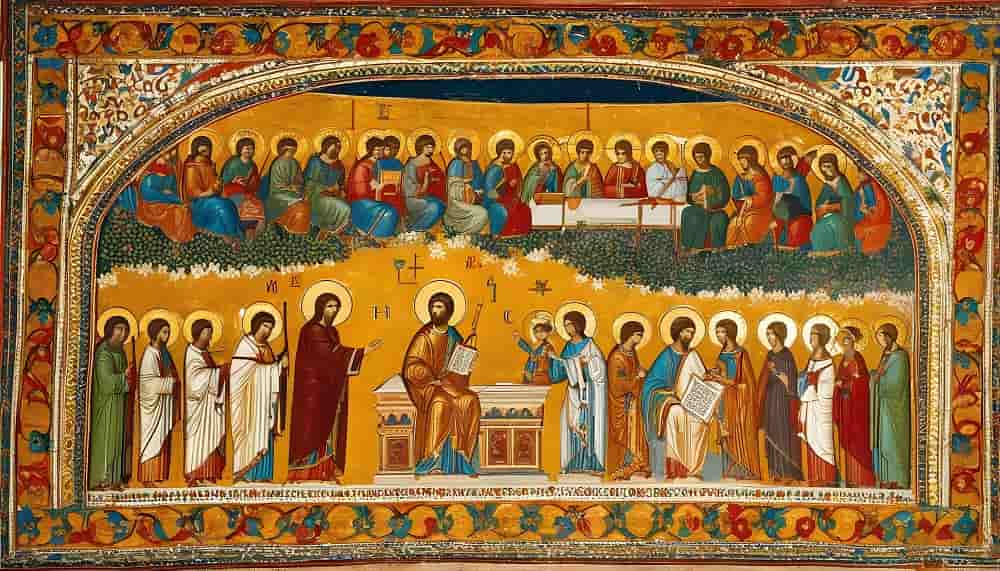In the year 1945, an unsuspecting farmer stumbles upon a collection of meticulously sealed earthenware jars nestled in the Egyptian soil near the Upper Egyptian town of Nag Hammadi. What unfolds is nothing short of a historical revelation—13 intricately leather-bound papyrus books concealed within. These covert volumes hold the clandestine wisdom of early Gnostic Christians, revealing a narrative that reshapes our understanding of human history.
Immersed within the pages is the startling revelation of humanity's genetic manipulation, a deliberate orchestration to guide evolution along a specific trajectory. Authored by the enigmatic early Gnostic Christians, these texts unravel the existence of extraterrestrial entities, the Archons—reptilian beings who, for centuries, held dominion over our planet. Across diverse ancient cultures, echoes of these serpent-like creatures reverberate. In the realms of India and Southeast Asia, they bear the moniker Nagas.
Yet, what captivates the imagination is the reference to the mythical Garden of Eden within these clandestine tomes. This utopian enclave is depicted not merely as a garden but as a complex genetic engineering laboratory, a crucible where the Archons endeavored to reshape the course of human evolution, seeking to mold it in their own reptilian image.
Read:-The Enigmatic Voynich Manuscript
Nag Hammadi library
The Nag Hammadi Library is a collection of early Christian Gnostic texts discovered in 1945 near the town of Nag Hammadi in Upper Egypt. These texts were found in 13 leather-bound papyrus codices that contained 52 separate treatises, including both Gnostic writings and three works that are also found in the New Testament. The discovery is significant for our understanding of early Christian diversity and the range of beliefs and practices within the early Christian communities.
Here are some key points about the Nag Hammadi Library:
Discovery: The Nag Hammadi codices were discovered by a local farmer in December 1945. The codices were buried in a jar and are believed to have been hidden by monks from the nearby St. Pachomius Monastery in the 4th century to protect them from destruction during a period of increasing orthodoxy in Christianity.
Content: The texts in the Nag Hammadi Library include Gnostic gospels, dialogues, hymns, and other theological and philosophical writings. Some of the well-known texts from the collection include the Gospel of Thomas, the Gospel of Philip, and the Gospel of Truth. These texts present alternative perspectives on Jesus, salvation, and the nature of the divine.
Gnostic Traditions: The Nag Hammadi texts are associated with Gnosticism, a diverse religious movement that emerged in the early centuries of the Common Era. Gnostic beliefs often involved esoteric knowledge (gnosis) and a dualistic worldview that distinguished between a transcendent, divine realm and a lower, material realm.
Read:-From Heaven to Earth: The Enigmatic Story of The Book of Enoch
Relation to the New Testament: While the Nag Hammadi Library includes some texts that are similar to those found in the New Testament (such as the Gospel of Thomas and the Gospel of Philip), these texts often present different theological perspectives. Gnostic teachings were considered heterodox by mainstream Christian authorities, and many Gnostic texts were not included in the canonical New Testament.
Scholarly Study: The discovery of the Nag Hammadi Library has had a profound impact on the study of early Christianity, providing scholars with new insights into the diversity of beliefs and practices in the early Christian world. The texts shed light on the dynamic and contested nature of Christian theological development.
Read:-The Most Mysterious Books in the World
Archons In Early Christian Thoughts
In Gnostic cosmology, the term "Archons" refers to a set of supernatural beings or authorities that are often depicted as rulers or cosmic forces that govern the material world. The concept of Archons is found in several texts from the Nag Hammadi Library, and their role and characteristics can vary across different Gnostic traditions. Here are some key points about the Archons as found in Gnostic texts:
Origin and Nature: The origin of the Archons varies in Gnostic cosmologies. In some traditions, they are seen as emanations from a lower, imperfect deity responsible for creating the material world. In other Gnostic systems, the Archons are depicted as rulers of the planetary spheres, each governing a specific celestial body.
Role in Creation: The Archons are often associated with the material or lower realms of existence and are considered responsible for creating and maintaining the physical world. In Gnostic thought, the material world is frequently viewed as flawed or even malevolent, and the Archons are sometimes seen as hindering spiritual ascent and trapping human souls in the material realm.
Ignorance and Deception: The Archons are commonly portrayed as beings of ignorance and deception, keeping humanity in spiritual darkness. They may be seen as forces that distract individuals from the pursuit of true knowledge or gnosis, which is central to Gnostic salvation.
Read:-The Mystery of the "Lost City of Z" - A Golden City Believed to Exist in the Jungle of Amazon
Overcoming the Archons: Gnostic texts often emphasize the need for individuals to overcome the influence of the Archons through spiritual awakening and the acquisition of gnosis. The Gnostic path typically involves transcending the material world and breaking free from the control of these cosmic rulers.
Archontic Powers in Specific Texts: The concept of Archons appears in various texts from the Nag Hammadi Library. For example, the "Apocryphon of John" describes the Archons as servants of the demiurge, the lower deity responsible for creating the material world. The "Gospel of Philip" mentions the Archons in the context of the soul's journey and the challenges posed by these cosmic rulers.
The Gnostic worldview and its understanding of the Archons are complex and varied. Different Gnostic sects and texts present unique interpretations of these cosmic entities. The study of the Nag Hammadi Library and other Gnostic sources provides insights into the diverse theological perspectives within early Christian communities.














0 comments:
Post a Comment